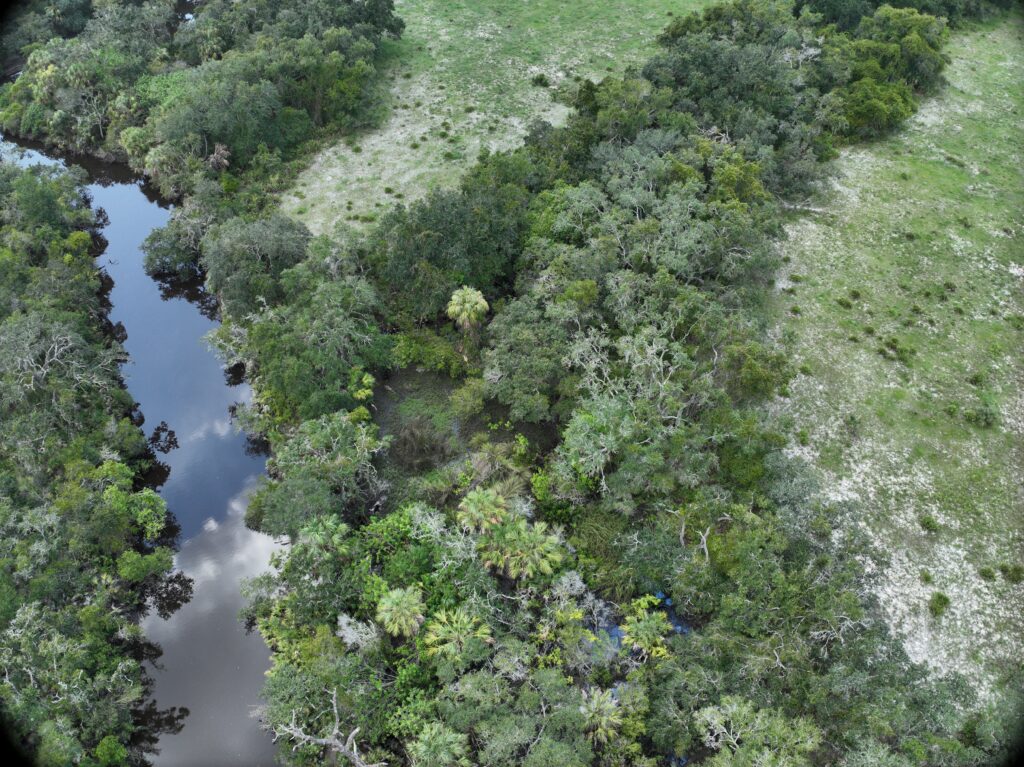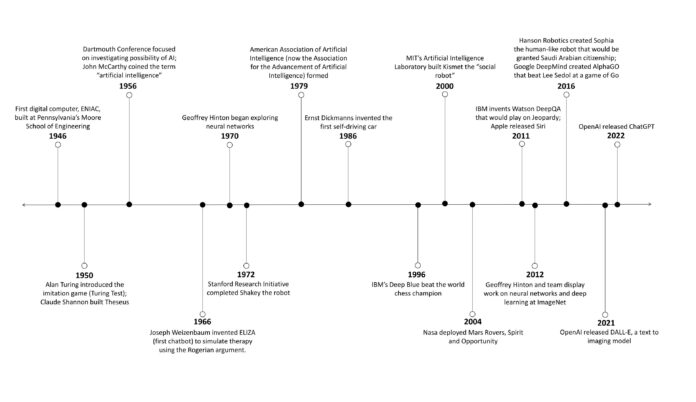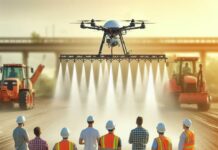With the rapid proliferation and growth in the capability of artificial intelligence (AI)-based applications, many industries have begun to explore their use to streamline processes, increase production and simply ease the workload burden. It’s no surprise that the use of AI applications for environmental compliance tasks and documentation is also being explored. While the myriad of possibilities and benefits intrigues many of us, the use of AI for regulatory compliance work has the potential to expose the user to unforeseen risks.
The rapid pace of AI development is not just a trend, but a transformative force that is reshaping industries, enhancing capabilities, and redefining the way we work. With advancements in AI, our industry is witnessing an era where developments occur in months rather than years.1 This is a momentous shift, akin to the early 1990s when the internet revolutionized the world.
To fully appreciate the potential of incorporating AI into the development and implementation of stormwater and other environmental compliance documents, we first need to grasp the fundamentals of AI and its historical advancements. AI is a technology that encompasses the development of software and hardware designed to simulate human functions such as completing tasks, learning and comprehension, problem-solving, decision-making and more.
The Evolution of AI
The early history of AI began in 1946 with the introduction of the first digital computer, ENIAC. Shortly after, Alan Turing, who is often considered as the father of modern computer science, appeared well beyond his time when he began exploring the future possibilities of computer science with his creation of the imitation test, or what is known today as the Turing Test. The Turing Test was a pivotal concept in AI because the purpose of the test is to identify whether a machine, or AI, is capable of exhibiting human-like intelligence. Progress in the field continued into the early 1970s, marked by new innovations and the Dartmouth AI Conference, which helped establish what is now the Association for the Advancement of Artificial Intelligence. However, between 1974 and 1980, a period known as the “AI Winter” occurred. During this time advancements stalled due to the limitations of existing technology. Claims that the AI industry was overpromising and underdelivering and not living up to the hype led to a decreased interest in the subject and lack of funding necessary to continue the advancements in computer technology needed to further progress AI research and developments.
Since the 1980s, the landscape of AI has not only thawed but accelerated rapidly, driven largely by significant increases in computational power, leading us into the current AI revolution2 (Figure 1).
One of the most impactful forces behind the AI revolution is the ability to continuously miniaturize computer chips while simultaneously packing more power and efficiency into each tiny chip. This progress has dramatically increased computational power while simultaneously reducing the size of devices.
As a result, the available format of computers has transitioned from room-sized computers to the small device currently residing in your pocket, all while lowering costs of such devices. These hardware advancements, combined with cutting-edge software developments and machine learning algorithms, have made the creation of today’s AI systems possible. Take the convergence of powerful, affordable computer technology, add the currently available more sophisticated algorithms, and, in the fashion of Diablo II, put those in your Horadric Cube and transmute them. Or for those readers not familiar with retro video game terminology: When combined it is greater than the sum of its parts. The resulting product is today’s transformative AI applications.
Today, AI exists in three main forms: narrow AI, general AI and super AI. Narrow AI performs specific tasks like virtual assistants, spell checkers and recommendation algorithms. General AI, which aims to replicate human cognitive abilities, and super AI, which would exceed human intelligence, are both theoretical. Each type has distinct implications for integration into stormwater and environmental compliance documentation.

AI for Documentation Today
While general AI and super AI remain theoretical concepts, how can narrow AI be practically applied to our industry and job functions today? Generally, AI has already been quietly integrated into daily tasks. Many people use search engines to research stormwater and environmental compliance regulations in unfamiliar jurisdictions or states. These search engines are leveraging AI to deliver relevant results by processing billions of searches per day and learning from those previous searches. AI also powers the review functions in word processing programs that check for grammar, clarity and vocabulary and suggest improvements through synonyms and concise language choices. These functions already help professionals in the industry prepare stormwater pollution prevention plans, environmental management plans and other compliance reports.
But what about more complex applications of narrow AI? AI-powered tools that incorporate machine learning and generative AI present advantages in simplifying and expediting the development and review of environmental compliance documents. By leveraging sophisticated algorithms, these tools can analyze large volumes of data, including site characteristics, regulatory requirements and historical compliance records. This analysis enables the automated generation of a comprehensive and customized list that accounts for applicable regulations and codes.
Recent advancements in vegetation management feature the use of deep learning for image identification, which is a type of machine learning, in imagery captured from unmanned aerial vehicles (Figure 2). This technology enhances our ability to assess environmental characteristics during site analysis,3 enables monitoring of sensitive resources4 and supports informed decision-making for final stabilization determination. AI image recognition tools must be trained not only to recognize vegetation but also to recognize best management practices such as mulch, silt fence and aggregates. This enables users to capture accurate stormwater inspection data, identify corrective actions and produce redline drawings much more quickly and safely than traditional methods with minimal post-processing of data.5
Three-dimensional civil design programs integrated with AI are helping engineers optimize grading designs and determine stormwater management designs with more precision. Weather prediction modeling that goes beyond “next week’s forecast” by using AI to facilitate faster data processing increases the feasibility of risk analysis based on the siting and timing of a project as well as the probability of extreme weather events such as droughts and hurricanes. This in turn can also allow projects to better plan erosion control designs and dedicate resources in preparation for such events, which reduces the risk of environmental noncompliance.
Custom generative AI models allow users to build, fine-tune or deploy their own models for specific use cases. A user can use existing pre-trained models such as large language models or image generation models and customize them for a task by training them on a specific data set. When it comes to developing environmental compliance documents, customized generative AI platforms enable the user to make quick determinations of applicable compliance regulations and rules. While accounts of private companies within the environmental compliance and construction industry indicate that developments of environmental compliance — focused AI applications are on the horizon, these currently remain experimental and proprietary.
By training a model on a specific data set, not only can users drastically decrease the amount of time spent researching, but can also reduce erroneous errors that may be present when using a broad-spectrum generative AI platform that pulls from non-specified data sets. Imagine the benefits of having an AI model that is trained in all the current state-specific construction general permits. With the right prompts, which is any form of text, question, information or coding that communicates to AI what response the user is looking for, producing stormwater design and compliance documents — saving time and ensuring accuracy.
Editor’s Note: This is the first of a two-part series. The second part of this series will appear in a future issue and will dive deeper into ongoing developments, future applications, challenges and risks of AI.
References:
- Roser M. (2024) The brief history of artificial intelligence: The world has changed fast — what might be next?, Our World in Data. Available at: https://ourworldindata.org/brief-history-of-ai (Accessed: 2024).
- The history of AI: A Timeline of Artificial Intelligence (2024) Coursera. Available at: https://www.coursera.org/articles/history-of-ai (Accessed: 2024).
- James K, Bradshaw K. (2020) Detecting plant species in the field with deep learning and drone technology, Brittish Ecological Society. Available at: https://besjournals.onlinelibrary.wiley.com/doi/10.1111/2041-210X.13473 (Accessed: 2024).
- Buchelt A, Adrowitzer A, Kieseberg P, Gollob C, Nothdurft A, Eresheim S, Tschiatschek S, Stampfer K, Holzinger A. (2023) Exploring artificial intelligence for applications of drones in forest ecology and management, Forest Ecology and Management, Science Direct. Available at: https://www.sciencedirect.com/science/article/pii/S0378112723007648?via%3Dihub (Accessed: 2024).
- Kazaz B, Poddar S, Arabi S, Perez MA, Sharma A, Whitman JB. (2021) Deep Learning-Based Object Detection for Unmanned Aerial Systems (UASs)-Based Inspections of Construction Stormwater Practices. Available at: https://doi.org/10.3390/s21082834 (Accessed: 2024).
About the Experts
- John England is a lead environmental scientist for Black & Veatch’s Construction Stormwater and Environmental Compliance practice. He provides environmental support and input during proposal and project development, including implementing and managing overall environmental compliance efforts during construction.
- Kayla Cottingham leads the Construction Stormwater and Environmental Compliance practice at Black & Veatch. She leads the team’s environmental support and input during proposal and project development, including implementing and managing overall environmental compliance efforts during construction.












